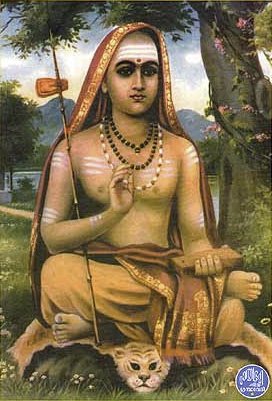Katha Upanishad with Shankara’s Commentary
by S. Sitarama Sastri | 1928 | 23,822 words
The Katha Upanishad is a collection of philosophical poems representing a conversation between the sage Naciketas and Yama (god of death). They discuss the nature of Atman, Brahman and Moksha (liberation). The book is made up of six sections (Valli). This commentary by Shankara focuses on ‘Advaita Vedanta’, or non-dualism: one of the classical ort...
Verse 2.3.19
सह नाववतु । सह नौ भुनक्तु । सह वीर्यं करवावहै ।
तेजस्विनावधीतमस्तु मा विद्विषावहै ॥ १९ ॥saha nāvavatu | saha nau bhunaktu | saha vīryaṃ karavāvahai |
tejasvināvadhītamastu mā vidviṣāvahai || 19 ||19. Let Him protect us both; let us exert together may what we study be well studied; may we not hate.
ओं शान्तिः शान्तिः शान्तिः ॥
oṃ śāntiḥ śāntiḥ śāntiḥ ||
Om! Peace! Peace! Peace!
Shankara’s Commentary:
Com.—This santi (expiatory prayer) is stated here for the purpose of removing all faults incurred by the disciple and preceptor, in the course of receiving, and imparting knowledge respectively, and caused by dereliction of rules due to oversight or excitement. Let him protect us both by illumining the nature of knowledge. Who? He alone, the Lord of all, revealed by the Upanishads. Again, let him protect us both, by revealing the fruits of such knowledge. Let us together acquire the strength produced by knowledge. Moreover, may what is studied by us, who are bright, be well studied! Or may what is studied, i.e., acquired by study, by us, be very potent! May we, disciple and preceptor, never hate each other, owing to blame incurred by us, by improper recital or instruction due to oversight! The repetition three times of ‘Peace,’ as ‘Peace! Peace! Peace!’ is for averting all evil. The word Om is to show that the Upanishad ends here.
———
॥ इति काठकोपनिषदि द्वितीयाध्याये तृतीया वल्ली ॥
|| iti kāṭhakopaniṣadi dvitīyādhyāye tṛtīyā vallī ||
Here ends the Kathopanishad.
———
